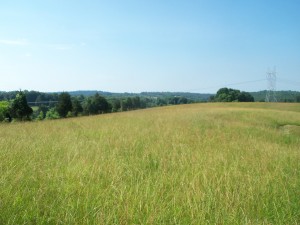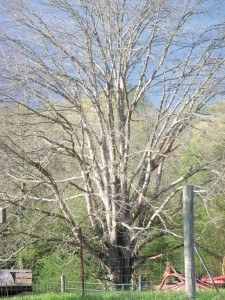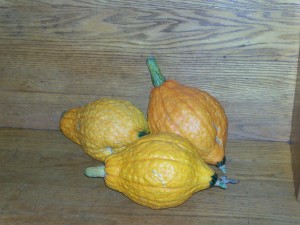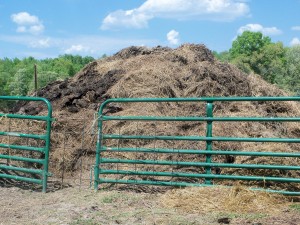Looking down at a long row of spiny pigweed intercropped with my crowder peas, a minor cousin of weltschmerz washes over me. Seemingly sprung to life overnight, the pigweed’s thorny presence towers above the peas planted six weeks ago. A clear challenge to my abilities, perhaps even to my character.
But what is this I’m feeling? What form of cowardice is this to shrink back from the world because a weed persists in an unwelcome spot? Did we rise up out of the dust of the Cretaceous for me now to recoil from this foe? Will I accept defeat?
I throw down my warrior’s implements, grab a beer, and retreat to the hammock. Perhaps after the next extinction event runs its course the spiny amaranth will develop consciousness and proceed to do better than we have with this poor planet.
Battling prickly foe hadn’t been the first challenge of the day. Earlier, I had tried to caponize a cockerel for the first time. The procedure entails cutting between the second and third rib of a young bird, extracting the male internal reproductive gland, then allowing the skin to snap back. A caponizing kit laid neatly on the table—rib spreaders, probe, scalpel, another instrument not listed in any inventory—I strapped the cockerel down with cord. Gripping the how-to pamphlet in my left hand, I picked the pin feathers away with my right.
Instructed by the pamphlet to follow the hip bone and find the ribs, I swabbed the designated section with rubbing alcohol and probed with my index finger, counting: one rib, two ribs. Rib spreaders standing by, I grabbed the scalpel and made ready to make the incision.
But where did the ribs go? They had seemed so clearly in evidence only a second before. The scalpel hung like Damocles’ sword over the little bird. “Make the cut anyway; you’ll figure it out,” I told myself. I hovered, the bird passively awaiting his fate.
Loosening the cord, I picked up the cockerel and released him back, unscathed, into the population of would-be gumbos and coq au vins blithely scratching about the farm. The capon of Christmas future will be created by a different surgeon, one of courage and surer anatomical knowledge.
I retreated to the garden, certain at least of my competence in that department. The eyes of 10,000 years of agriculture followed my movements with intimate nods of confidence.
Ah, for the simple joy of the hammock. This I can do.
………………………………………………………….
Reading this week: Lesser Beasts: a snout to tail history of the humble pig, by Mark Essig. Another nice addition to bookshelf on the rich history of the pig.




